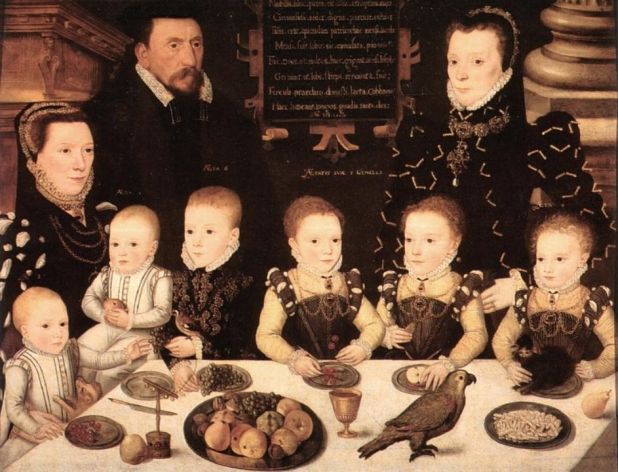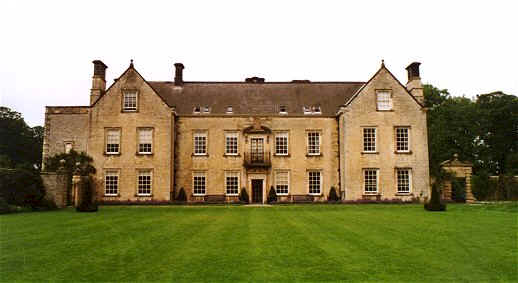William Parr
Jump to navigation
Jump to search
UNFORGETTABLE CHARACTER QUOTES
DEFINING EPISODES | MEMORABLE SCENES
PHOTOS
William Parr, Marquess of Northampton & Earl of Essex [not portrayed on the series]
| born 1513 - died 28 October 1571 Character's backstory: William Parr was the brother of Queen Catherine Parr and Anne Parr, Lady Herbert. Early on, William's uncle, Lord Parr of Horton, secured a place for William in the household of Henry Fitzroy, Duke of Richmond; Henry VIII's illegitimate son. Lord Parr was head of the household and was responsible for the overall upbringing of the Duke. Parr was brought up and educated along side Fitzroy and Henry Howard, Earl of Surrey. In 1527 [aged 14], he married first, Lady Anne, daughter of Henry Bourchier, 2nd Earl of Essex. At the age of marriage, Anne was about 10. The two did not live with each other for at least ten to twelve years later [about 1537-39]. The match was purely political and the marriage was not a happy one. Anne has been described as poorly educated. William spent his time at court while Anne insisted on staying in the country. Her first appearance at court was in 1539 at a banquet. In 1541, Anne embarked in a scandal by leaving her husband [see right column]. William was knighted on 18 Oct. 1537, took part against the northern rebels, was one of those who tried the Lincolnshire prisoners in 1538, and was created Baron Parr and Ros of Kendal on 9 March 1539. On 23rd December, 1543 he was created Earl of Essex, this title being chosen because it had, in 1539, become extinct on the death of his father-in-law, Henry Bourchier, second earl of Essex. Parr was set to inherit the title after his father-in-law's death, but the title was bestowed upon Thomas Cromwell in April 1540. Parr was disappointed by this but continued to serve the King. After Cromwell's execution, three months after he was created Earl, the title was finally rightfully Parr's. In the series, it shows only Surrey entertaining and showing the Duke of Najera around London. In fact, on 17 February 1544, it was Parr and Surrey who dined with the Duke of Najera and brought him to be introduced to the King. He was one of the commissioners for the trial of Henry Howard, Earl of Surrey on 13th January 1546-7. He was known as Prince Edward Tudor's 'beloved uncle' and became one of the most important men at Edward's court. Parr was part of the Regency council left to watch over and guide Edward. He did not support his sister's re-marriage to Sir Thomas Seymour. Being part of Edward's court, he was partial to Thomas's elder brother Edward, Earl of Hertford. His sister, the Dowager Queen Catherine, died in 1548 leaving a baby daughter, Lady Mary Seymour. After her father, now Lord Seymour of Sudeley, attempted to marry the Lady Elizabeth and overtake the government, he was arrested and sentenced to death. This left Lady Mary an orphan. She was not taken in by either uncle or aunt, now Countess of Pembroke, and there is no explanation for this. After the downfall of the Lord Protector, Parr flourished during the time of John Dudley, 1st Duke of Northumberland's as leader of the government. Parr, and especially his wife, were part of the plot to put Lady Jane Grey on the throne after Edward's death. Upon the ascension of Queen Mary in 1553, Parr was arrested and was committed to the Tower after his traitorous behavior. After Parr was sentenced to death on 18 August 1553, his first wife, Anne, intervened on Parr’s behalf in hopes that they [she] would be able to keep their estates. Parr was released. The bill which had declared their marriage null and void [during Edward's reign] was reversed on 24 March 1554 under Queen Mary. That December, Anne used the reversal to her advantage and was granted an annuity of £100. Again in December 1556, Anne was granted another annuity of £450. She remained at court until the ascension of Elizabeth I. Queen Elizabeth held Parr in high favour and Anne most likely knew that her charades would not be welcomed by the queen. She therefore retired quietly to her estate in Benington Park where she spent the rest of her life dying on 28 January 1571 [for more info see right column]. He was stripped of all his titles by Mary I in 1553, but they were restored by her sister Elizabeth I in 1559. He was made a privy councillor on 25 Dec. 1558, and was one of those whom Queen Elizabeth I consulted respecting the prayer-book. Elizabeth seems to have liked him. She stopped to inquire about his health, when he was ill with an ague, on her way into London both in November 1558 and on July 1561. In May of 1571, after the death of Lady Anne, he was free to legally re-marry. By this time his second love, Elizabeth Brooke, had died. He chose a Swedish maid-of-honour, a favored lady of Elizabeth I, named Helena Snakenborg to re-marry. He died shortly after on 28 Oct. 1571, at Warwick. Queen Elizabeth paid for his funeral at St. Mary's Church there. In spite of considerable traffic in abbey lands and of grants made to him at his sister's marriage and later, he did not die rich. On his death at age 58, he left no issue, the titles became extinct and what property he had passed to his nephew Henry Herbert, the 2nd Earl of Pembroke, son of his sister Anne Parr. He was buried at Collegiate Church, Warwick, England (see right). Gentility: Nobility, Courtier, Sir Knight, brother of Queen Catherine Parr and Anne Parr, Lady Herbert.It was this William Parr who built the oldest parts of the surviving house of Nunnington, which now form part of the west front. Following the forfeiture of the estate, Nunnington was again subject to let, one of the tenants being Dr Robert Huicke who was physician to both Catherine Parr and Elizabeth I. Position: Earl of Essex, 7th Creation (1543 - 1553) and again after Elizabeth I accession (1559 - 1571) Lord-lieutenant of five of the eastern counties and Great Chamberlain (1550 - 1553) In March 1543 he became a privy councillor Lord Warden and Keeper of the Marches after his sister Catherine became favoured by the King. Created Marquess of Northampton at the accession of Edward VI (1547 - 1553) and again after Elizabeth I's accession (1559 - 1571) Baron Parr of Kendal (1547 - 1553) and again after Elizabeth I's accession (1559 - 1571) At the accession of Mary I, all titles were stripped as he was sent to the Tower. In 1559 Parr, enjoying the favor of Queen Elizabeth, was recreated Marquess of Northampton, Earl of Essex, and Baron Parr of Kendal; he was also re-elected to the Order of the Garter. Personality type: attractive, witty and charismatic. He was the consummate courtier and friends with many of the leading lights at court. Henry called Parr ‘My Integrity’ – before he fell for Parr’s sister, Catherine – as he could trust him to tell the truth even if it was not what the King wanted to hear. Signature look: Endearing trait(s): Patience, tolerance, intelligence, Annoying trait(s): Click EasyEdit to update this page! (Don't see the EasyEdit button above? <a href="../#signin" target="_self">Sign in</a> or <a href="../accountnew" target="_self">Sign up</a>.) | 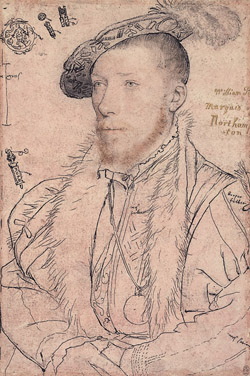 William Parr by Hans Holbein 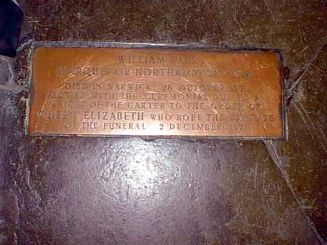 St. Mary's Collegiate Church, Warwick, England. Transcription: Died in Warwick 28 October 1571. [Buried] with the ceremonial due [of a] Knight of the Garter to the Order of Queen Elizabeth who bore the expense of the funeral, 2 December 1571.
| |
CHARACTER CONNECTIONSFamily Members: Father: Sir Thomas Parr of Kendal Mother: Maud Green Sister: Catherine Parr, Queen of England and Ireland Sister: Anne Parr, Lady Herbert (later Countess of Pembroke) Paternal Grandfather: Sir William, Baron of Kendal Parr Paternal Grandmother: Elizabeth FitzHugh, Baroness Vaux of Harrowden (1st wife of Nicholas, 1st Baron Vaux) Uncle: Sir William, Baron of Horton Parr; Sir John Parr Aunt: Anne, Lady Cheney Maternal Grandfather: Sir Thomas, Lord of Greens Norton Maternal Grandmother: Lady Joan Fogge Aunt: Anne Green, Baroness Vaux of Harrowden (2nd wife of Nicholas, 1st Baron Vaux) Brother-in-law: King Henry VIII, King of England Brother-in-law: Thomas Seymour Brother-in-law: Lord Latimer Cousin: Bishop Tunstall, Sir George Throckmorton * For ancestry see: Ancestors of Catherine Parr Romance(s): Hon. Dorothy Bray, Baroness Chandos of Sudeley (maid-in-waiting at court) Marriages: 1) Lady Anne Bourchier, Baroness Bourchier (m. 1541-1547) 2) Elizabeth Brooke (m. 1547-1565, married while first wife was still alive, legal under Edward and Elizabeth, but during Mary's reign, the marriage was declared null and void.) 3) Helena Snakenborg (m. 1565-1571, legal wife) Children: None. | Friends: Bishop Tunstall Henry Fitzroy, Duke of Richmond Sir George Throckmorton King Henry VIII Charles Brandon, 1st Duke of Suffolk Thomas Howard, 3rd Duke of Norfolk George Talbot, Earl of Shrewsbury Henry Howard, Earl of Surrey Edward Seymour, Earl of Hertford (while in favour) William Herbert, Earl of Pembroke (brother-in-law) Prince Edward Tudor Princess Elizabeth Tudor (Queen Elizabeth I) Lady Jane Grey John Dudley, 1st Duke of Northumberland Jane Guildford, Lady Dudley Enemies: Princess Mary Tudor (when she became Queen she stripped him of all his titles) Lady Anne Bourchier (his first wife) John Lygnfield (lover of his first wife, Anne) Edward Seymour, Duke of Somerset (when he fell out of favour) Thomas Cromwell, Earl of Essex |
UNFORGETTABLE CHARACTER QUOTES
DEFINING EPISODES | MEMORABLE SCENES
PHOTOS
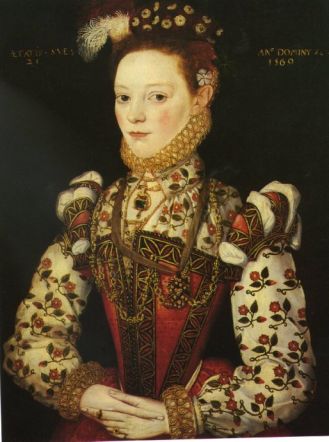 Helena Snakenborg, Marchioness of Northampton (3rd wife of William Parr) Born Elin Ulfsdotter of Fyllingarum in Sweden, she was the daughter of Ulf or Wulfgang Henriksson Snakenborg of Ostargotland (d.c.1565) Senator of Sweden, and his wife Agneta Knutsdotter, heiress of Norrnes. Her father was a supporter of Gustav I, king of Sweden. By all accounts, Helena was a beautiful woman, with large brown eyes, red hair, and a pink and white complexion. She was described as having a strong will and independent mind. She came to England as a maid of honor to Princess Cecilia of Sweden on a state visit in the autumn of 1565 and stayed on when Cecilia left in May 1566. She was being courted by William Parr, who had asked her to marry him, even though he was not legally free to remarry. He promised her a house of her own. At that point, Queen Elizabeth stepped in, taking Helena into her keeping at court, possibly as a maid of honor. Later she was a gentlewoman of the privy chamber, although without pay. Helena became one the queen's most intimate aides and controlled access to the queen. Helena was granted many privileges, such as her own lodgings at Hampton Court Palace, servants, and a horse. However, as she was not a waged member of the privy chamber and it is not known how regularly she attended the royal court.Helena and Parr finally married in May 1571, after the death of his first wife, from whom he had been separated for decades. The bride was twenty-two and the groom fifty-seven. The couple seemed happy together and divided their time between their houses in Guildford, Surrey, and at Stanstead Hall, Essex. The marriage came to a sudden end within a few months when the marquess died on 28 October 1571. There were no children. The Dowager Marchioness Helena had received a substantial dower. According to English custom, as widow of a peer whose title became extinct, she enjoyed the title of Marchioness for the rest of her life. Helena seems to have been also known as the "Good Lady Marquess". As marchioness of Northampton, she was senior to every other lady at court save the queen and the queen’s cousin, Margaret Douglas. Around 1577 she remarried, taking as her second husband Thomas (later Sir Thomas) Gorges (1536-March 30,1610). Helena was a patron of the arts, rebuilt Langford House in Wiltshire, and was chief mourner at the funeral of Elizabeth Tudor. [source: <a class="external" href="http://www.kateemersonhistoricals.com/TudorWomenU-V.htm" rel="nofollow" target="_blank" title="Who's who of Tudor Women by Kate Emerson">Who's who of Tudor Women by Kate Emerson </a>] 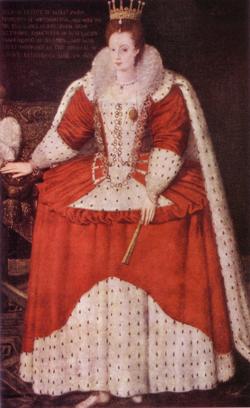 | 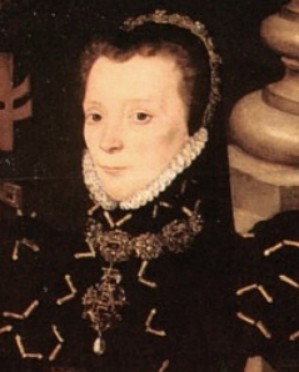 Elisabeth Brooke, Marchioness of Northampton (2nd Wife of William Parr) Lady-in-waiting to Catherine Parr detail of the Cobham Family Group by an artist of the British School (see below) The daughter of George Brooke, 9th baron Cobham and Anne Bray. She is known to have been at court in 1543 and to have captured the heart of the queen’s brother, William Parr, but it seems reasonable that she might have been there earlier, perhaps in attendance at the banquet held by King Henry for a number of ladies after Katherine Howard was arrested. See Mistresses of the King. In 1543, Elizabeth’s desire to marry Northampton was thwarted by the fact that he already had a wife, one he had repudiated for adultery many years before. Elizabeth and Northampton went through a private form of marriage in 1547 and began living together, but when this became known they were ordered to separate by Edward Seymour, the duke of Somerset, Lord Protector for King Edward VI. Elizabeth was sent to live with Catherine Parr, now the wife of Sir Thomas Seymour. She remained in that household until April, 1548, when her marriage to Northampton was declared valid. This was later ratified by an Act of Parliament on March 31, 1552. The Northamptons took up residence in Winchester House in Southwark and Lady Northampton spent much of her time at court. Together with Frances Brandon and Jane Guildford, the duchesses of Suffolk and Northumberland, she was involved in the matchmaking that preceded Northumberland’s attempt to place Lady Suffolk’s daughter, Lady Jane Grey, on the throne of England instead of Mary Tudor. Some sources even credit her with the suggestion that Lady Jane marry one of Northumberland’s sons. Elizabeth may have accompanied Lady Jane to the Tower to await her coronation after the death of King Edward VI. Upon Northumberland’s defeat, Northampton was arrested, tried, sentenced to death, and then pardoned at the end of December, but all was not well. Bishop Gardiner, released from the Tower by Mary Tudor and restored to his former post as Lord Chancellor, had ordered Elizabeth out of Winchester House. Northampton had been deprived of his titles, his lands, his Order of the Garter and, by the repeal of the act of 1552 (on October 24, 1553), his second wife. Forced to borrow money on which to live, Elizabeth probably went to live with her mother, Lady Cobham, or her brother, William, in Kent. When Parr was released from the Tower, he stayed at the house of Sir Edward Warner in Carter Lane. Sir Edward was married to Elizabeth’s aunt, the former Lady Wyatt. It was her son, Sir Thomas Wyatt, Elizabeth’s cousin, who led a rebellion against Queen Mary. They existed in considerable poverty for the remainder of Queen Mary’s reign. In 1557 they were living in Blackfriars when the French ambassador, the bishop of Acqs, asked Elizabeth to deliver a message to the queen’s sister at Hatfield. It was a warning not to flee to France to avoid being forced to marry Emmanuel Philibert, duke of Savoy. In the last months of Mary’s reign, in what was probably an influenza epidemic, Elizabeth Brooke’s mother, father, and maternal grandmother died and Parr was seriously ill. With Mary’s death, however, Elizabeth’s fortunes took a turn for the better. The new queen made a point of stopping to speak to Northampton as her procession through London passed his widow. On January 13, 1559, she restored him as marquis of Northampton. Elizabeth Brooke became one of the queen’s closest women friends and when she fell ill, the queen came from St. James to dine with her and spend the day. In August 1562, Lady Northampton was reportedly near death from jaundice and high fever and given up for lost in mid-September, but by October 12th she had recovered. In 1564, however, she developed breast cancer. She made a trip to Antwerp in hope of a cure, accompanied by her brother William and his wife, but the effort was futile. In November of that year the personal physician of Maximilian, king of Bohemia, came to England to examine her. He could do nothing, either, nor could a series of quacks. In January 1565, the queen’s physician, Dr. Julio, took over her treatment. Unfortunately, his man, Griffith, made sexual advances toward Elizabeth, who was still, apparently, “one of the most beautiful women of her time,” and the queen had both men thrown into the Marshalsea. When Elizabeth died, the queen paid for her funeral. |
Nunnington Hall North Yorkshire, England Nunnington Hall is a country house situated in the English county of North Yorkshire. The river Rye, which gives its name to the local area, Ryedale, runs past the house, flowing away from the village of Nunnington. Nunnington Hall is owned, conserved and managed as a visitor attraction by the National Trust. |
